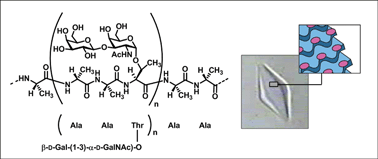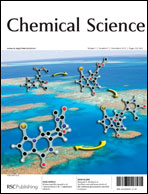Synthesis and antifreeze activity of fish antifreeze glycoproteins and their analogues
Abstract
Fishes from both Arctic and Antarctic waters produce antifreeze glycoproteins (AFGPs) that modify and inhibit the growth of ice crystals, allowing them to survive in extreme cold conditions. These glycoproteins exhibit thermal hysteresis activity, i.e. they work in a non-colligative manner, separating the melting and freezing points of a solution. Such compounds have many potential applications; unfortunately their development is hampered by the difficulty of obtaining pure material. The synthesis of AFGPs is therefore a challenge that numerous groups have been tackling. The AFGPs consist predominantly of a repetitive three amino acid unit (Ala-Ala-Thr)n with the disaccharide β-D-galactosyl-(1–3)-α-D-N-acetylgalactosamine attached to the hydroxyl oxygen of each threonine residue. A large number of analogues have also been synthesized in order to find compounds that exhibit the same activity but that are easier to prepare. Starting from the early years of the AFGP discovery and including the more recent research, this perspective summarizes the different routes used to synthesize native AFGPs and lists the most relevant analogues synthesized, along with some information on their synthesis and their antifreeze activity, if evaluated. In this perspective we have taken special care to differentiate compounds that induce thermal hysteresis, compounds that modify the normal growth habit of ice crystals, and compounds that exhibit recrystallization inhibition properties.


 Please wait while we load your content...
Please wait while we load your content...